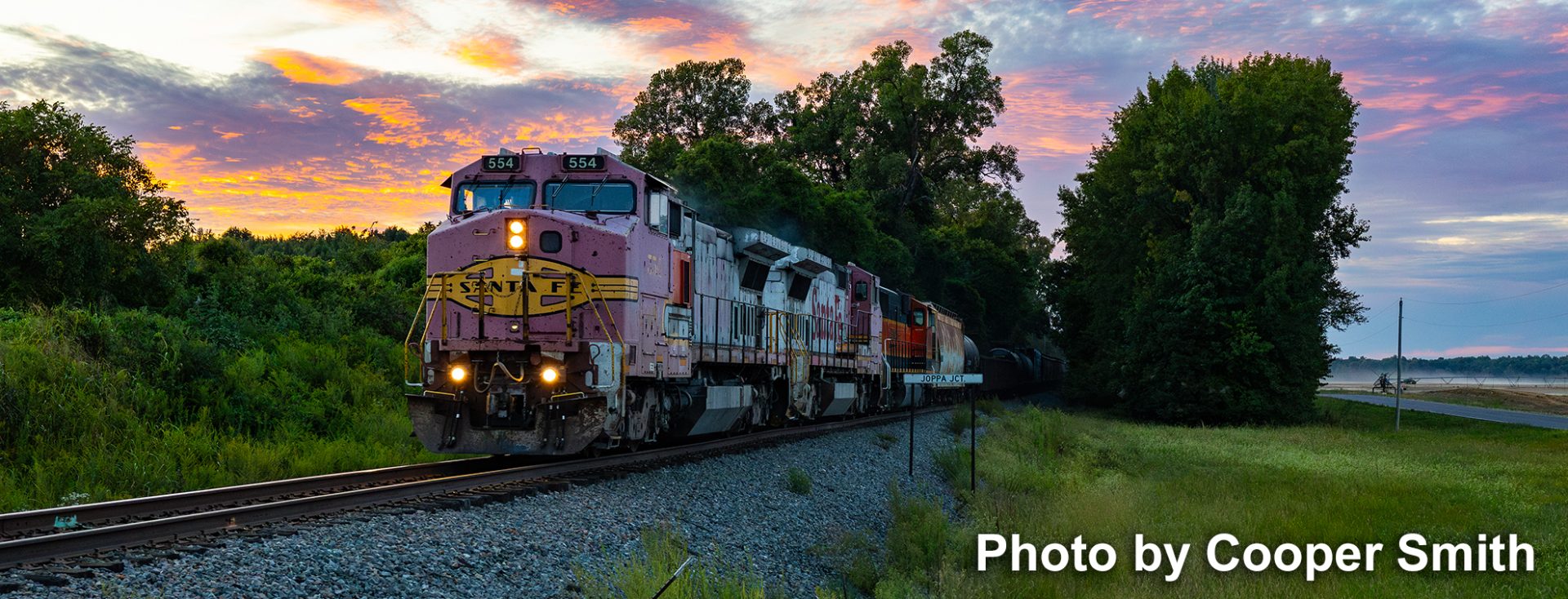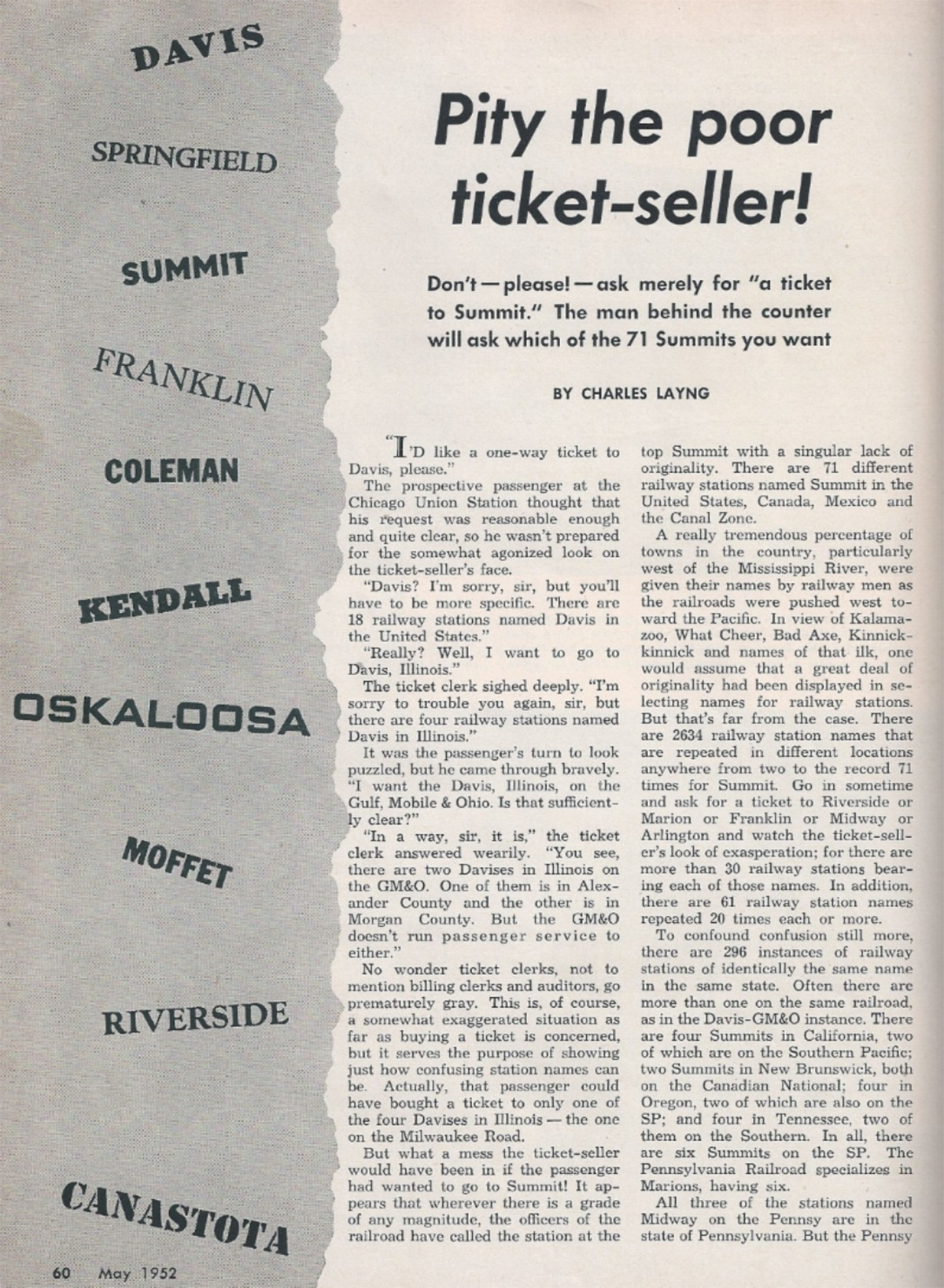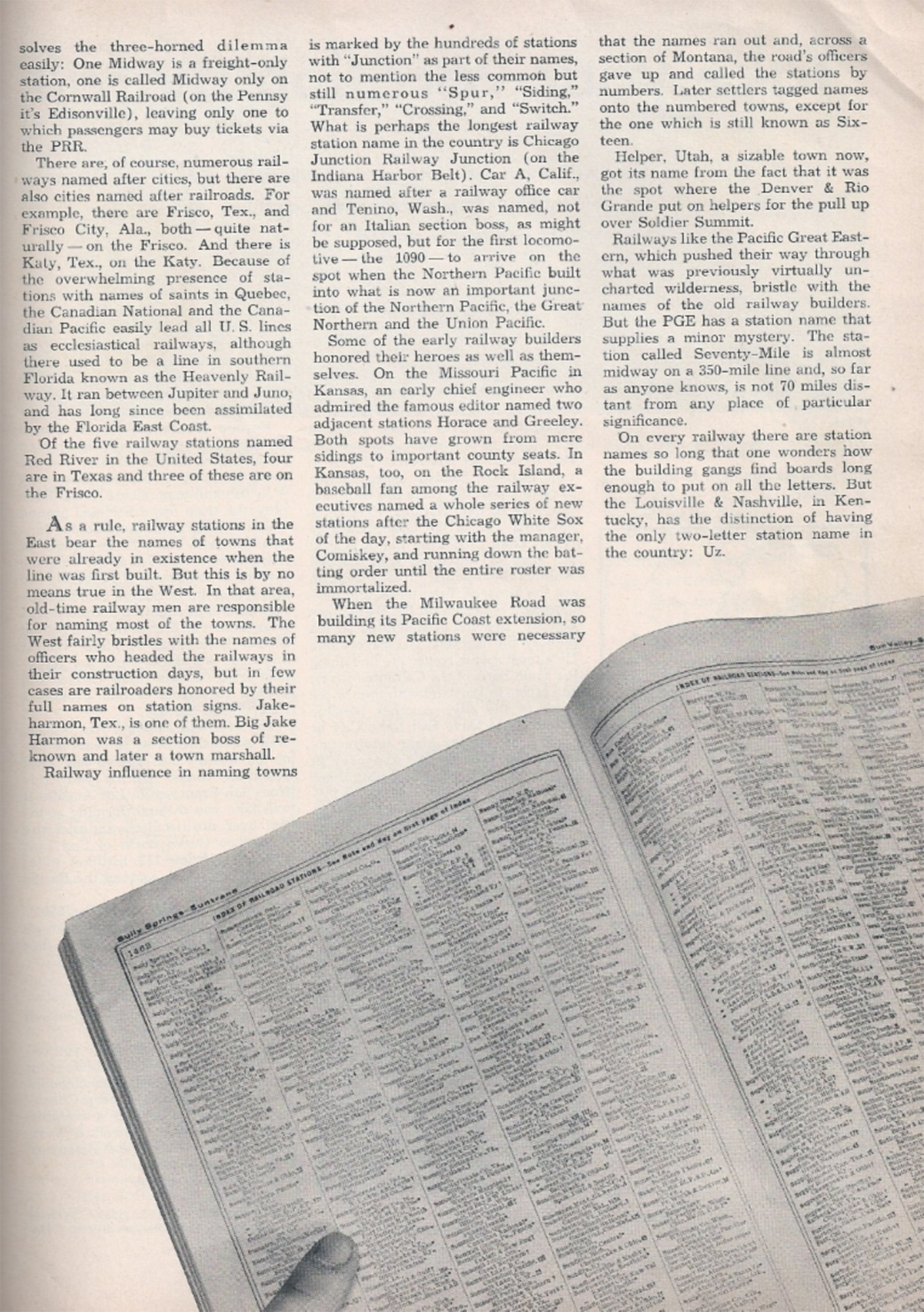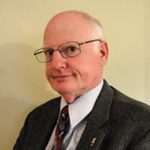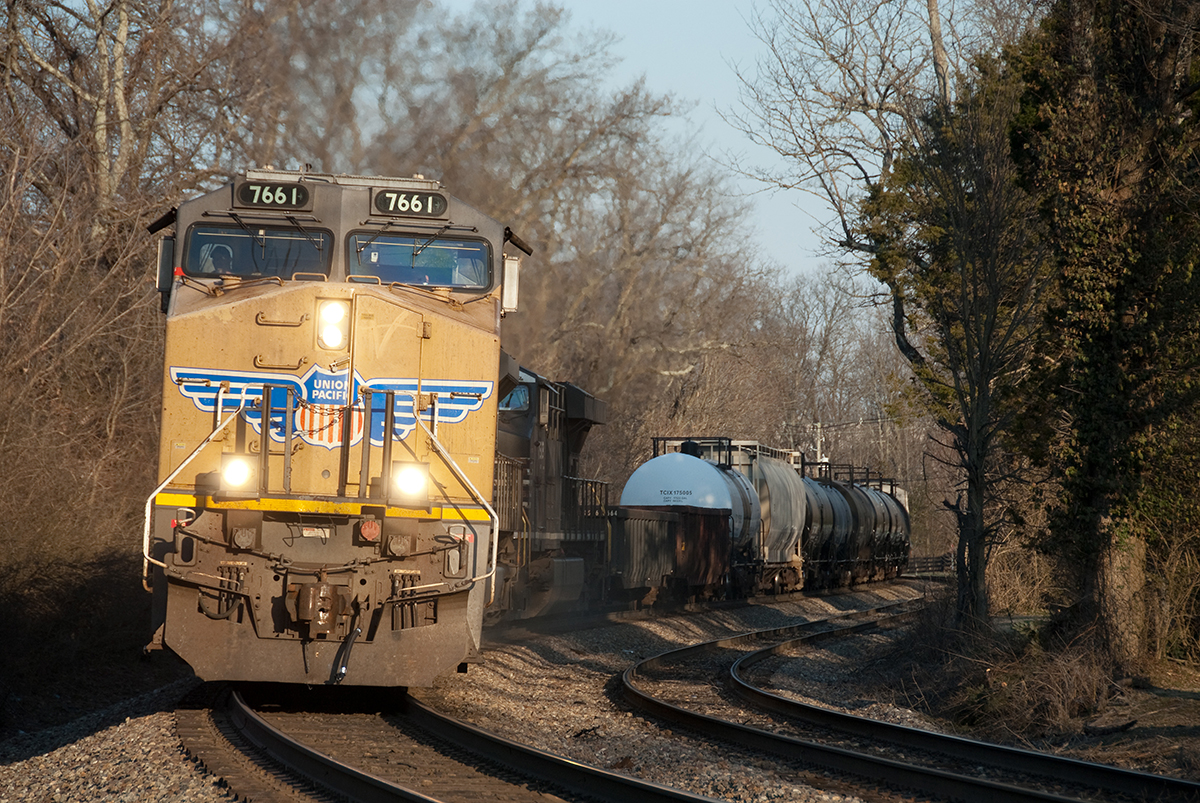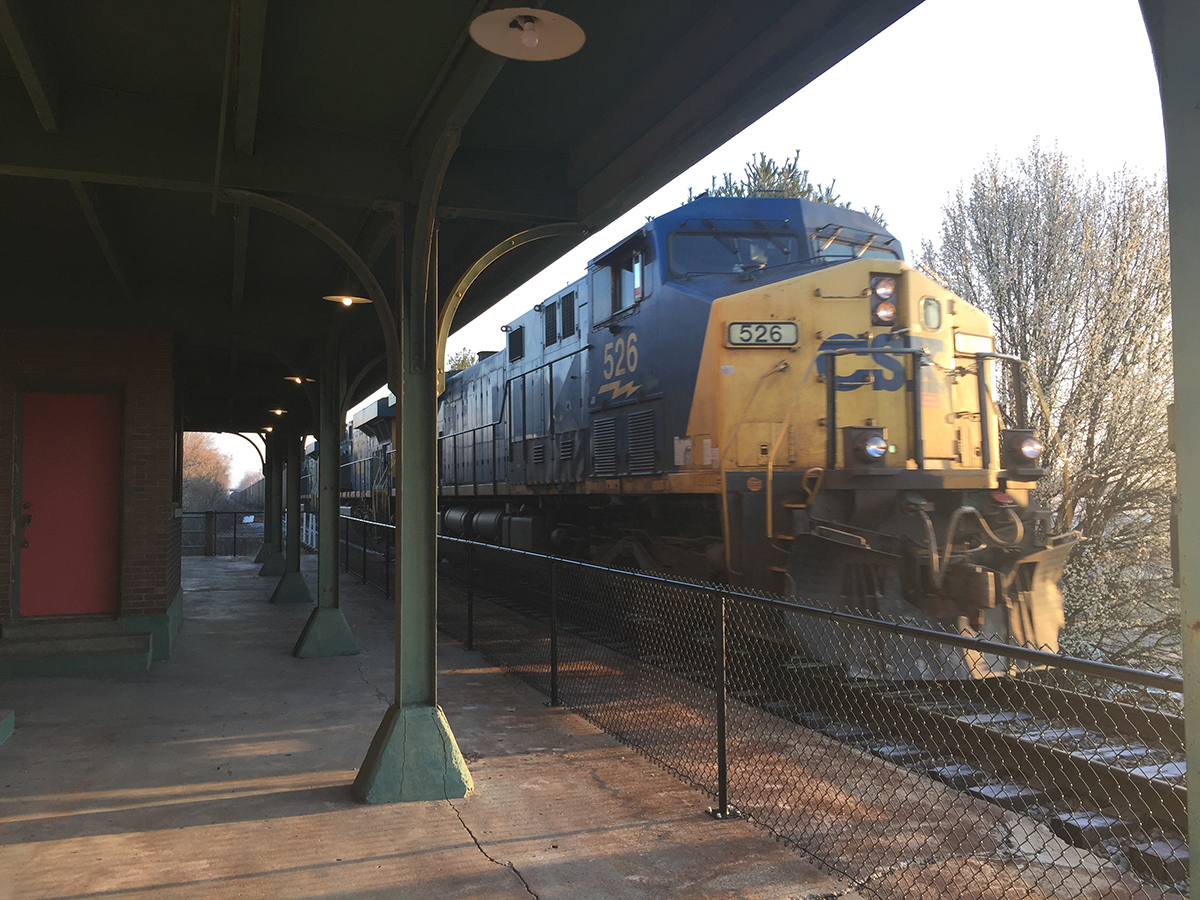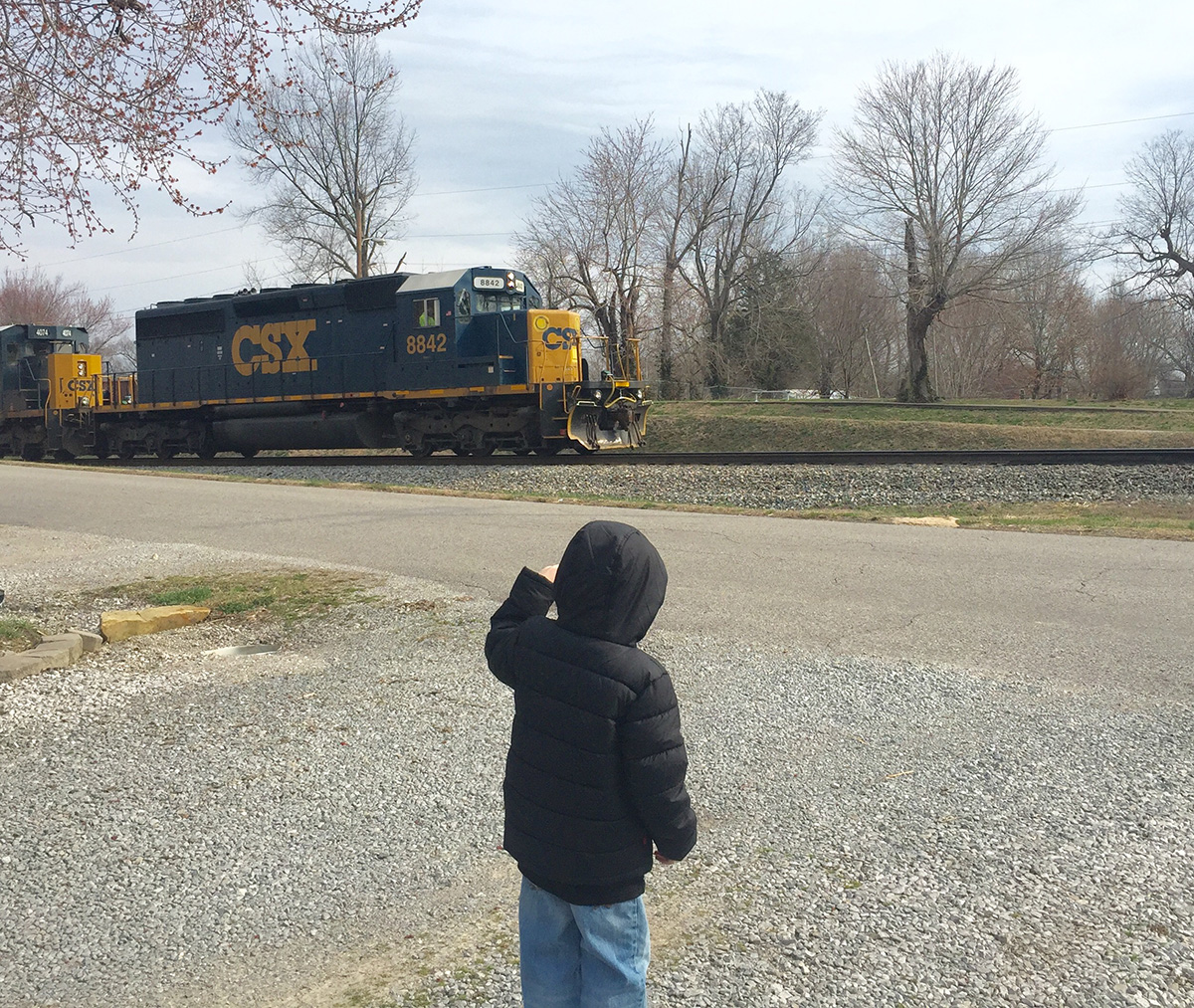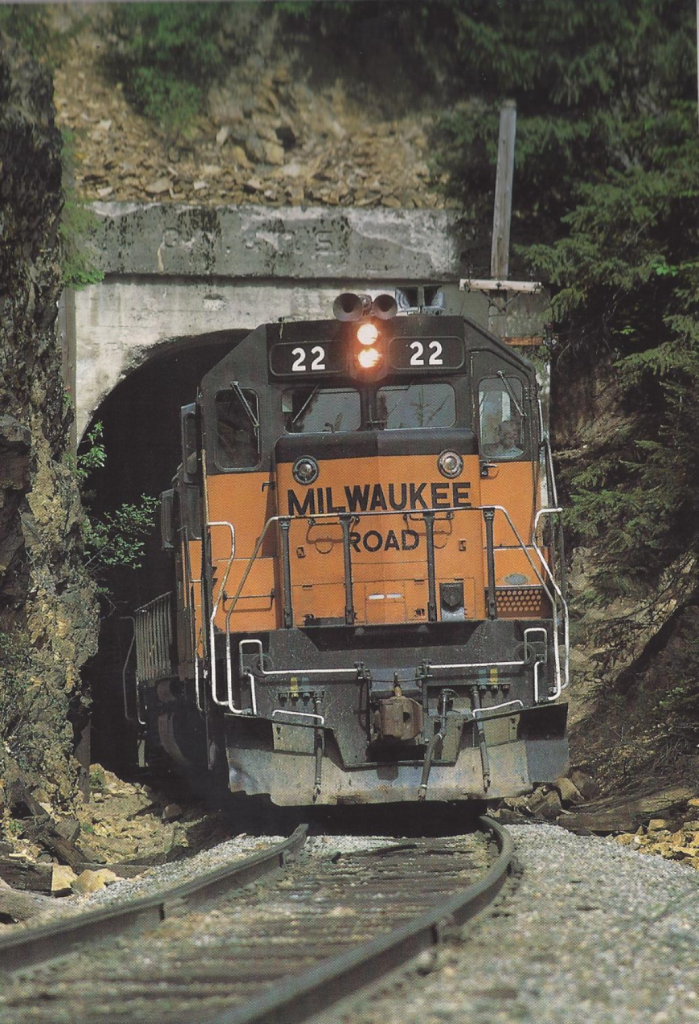 Kathy and I celebrated our 18th anniversary the weekend of April 8 by going to Bardstown KY and a ride on “My Old Kentucky Dinner Train” for the noon meal trip on April 7.
Kathy and I celebrated our 18th anniversary the weekend of April 8 by going to Bardstown KY and a ride on “My Old Kentucky Dinner Train” for the noon meal trip on April 7.
Our trip started out with snow and icy roads. My drive to Bardstown from Mortons Gap was, at times, white knuckle! Once we arrived and redeemed our vouchers, I walked around the old ex-L&N depot, looked over the model trains on display, took in the many prints on the wall and admired the remaining antique scale.
Once on board the train and seated in car number 003, we chatted with our table mates Tyrell and NaTosha. No, I am not making this up! This newly wed couple had never ridden a train and seem to enjoy the event. Tyrell and I had some common ground and interests. 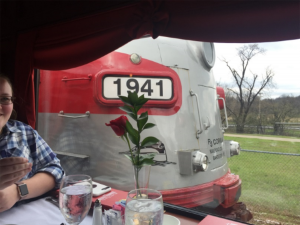
The ride was nice. The track was surprisingly uneven for RJ Corman Railroad standards. But slow speed made the ride “real”! Kathy had a first time experience of walking on a moving train and laughed the whole time! The aforementioned snow made the view outside our window most pleasant.
On the return trip we were having dessert when I felt the generator change tone, vibrate…(l looked at Tyrell and he had the same look on his face I did. His experience as a mechanic told him what I felt to be as well) then…it died. Out went the lights, the AC and the noise was…no noise!
Even though it was about 38 degrees outside by this time, with 60 plus people in our car it began to heat up quickly! Our train came to a stop, crew members arrived outside our window with tools. With in minutes we were on our way with lights and AC….and generator noise!
A high light for me was seeing the RJ Corman Railroad EMD F units run around our train at each end of the run.
The trip back was over in a flash it seamed. We left out passenger car for the open road…well, hi-ways 150 and 68 to Wilmore KY. and the Potters Inn B&B.
As for the meal…we ordered the Kentucky Hot Brown. Now, I grew up with Mom and Kathy’s KY Hot Brown served with brown gravy! I did not know the traditional KY Hot Brown has creamy cheesy… stuff on it! The quality was excellent. I did not like the meal which is no reflection on the cook or the train. The Apple Dumpling though…beyond good!
I doubt I will do the dinner train again unless for a really special occasion. I do however recommend same for anyone whom enjoys trains.


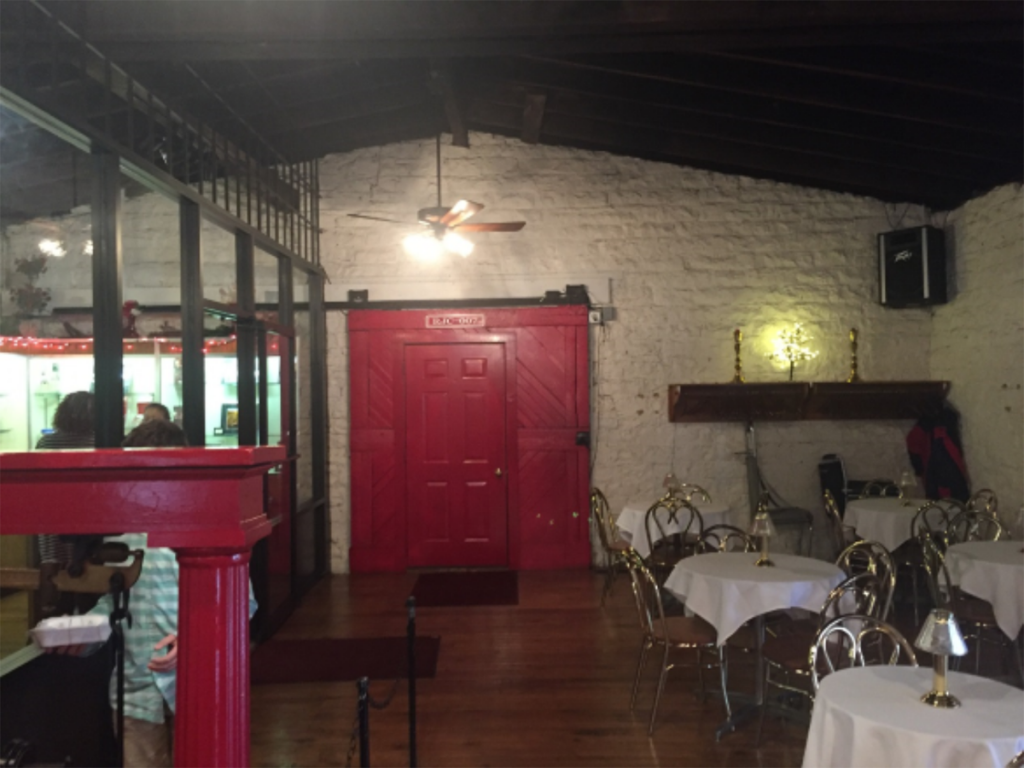
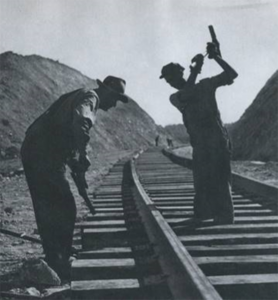 Way back when, few insurance companies would write policies for railroaders — their jobs were considered too risky. Early in the 20th Century (and before the various “Safety First” campaigns that we still see today), a dozen railroaders – on average — died on the job each day. On any given day, tens or hundreds more were injured or maimed.
Way back when, few insurance companies would write policies for railroaders — their jobs were considered too risky. Early in the 20th Century (and before the various “Safety First” campaigns that we still see today), a dozen railroaders – on average — died on the job each day. On any given day, tens or hundreds more were injured or maimed.